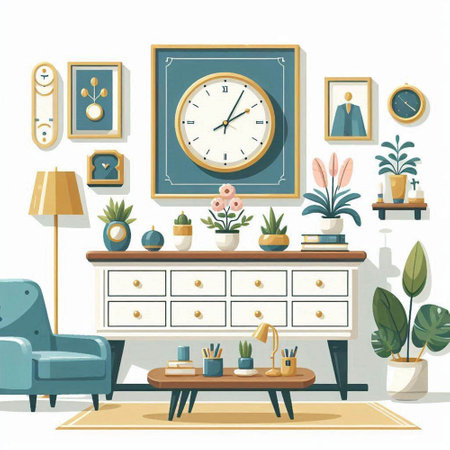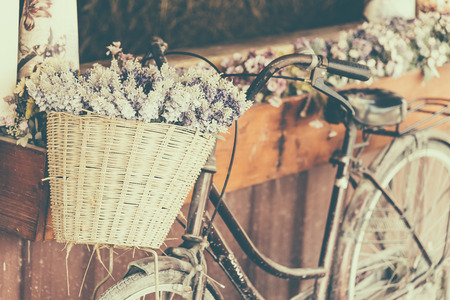Introduction: Blending Old and New in the British Home
In recent years, British interiors have seen a remarkable shift towards combining the timeless elegance of vintage pieces with the sleek minimalism of modern design. This blend, championed by creative homeowners and designers alike, brings personality and warmth to contemporary living spaces across the UK. The growing popularity of upcycling furniture – transforming old or discarded items into stylish new treasures – perfectly captures this trend. It’s not just about aesthetics; it’s about sustainability, nostalgia, and making your home uniquely yours. As more people seek to reduce waste and embrace mindful consumption, upcycling has become a beloved practice that reflects both traditional British thriftiness and a forward-thinking approach to home décor. By mixing vintage finds with modern elements, UK homes are now full of character, history, and a distinctly personal touch.
2. Sourcing Vintage Finds: Where British Style Begins
Embracing the beauty of upcycling starts with finding that perfect piece, and in the UK, sourcing vintage furniture is almost a rite of passage for those wanting to blend old-world charm with contemporary style. British towns and cities are sprinkled with unique places to hunt for treasures—each with its own quirks and character. Whether you’re scouring local charity shops, waking up early for a car boot sale, or scrolling through distinctly British online marketplaces, the journey is as rewarding as the find itself.
Tips for Finding Second-hand Treasures
| Place | Why It’s Special | Top Tip |
|---|---|---|
| Charity Shops | From Oxfam to British Heart Foundation, these shops offer affordable pieces while supporting good causes. | Check often—stock changes quickly and new items arrive daily. |
| Car Boot Sales | A beloved weekend tradition where locals sell unwanted goods from their car boots in fields or car parks. | Arrive early for the best selection; bring cash and be ready to haggle politely. |
| Online Marketplaces (e.g., Gumtree, Facebook Marketplace) | Easy access to a wide range of furniture right in your local area. | Set alerts for keywords like “vintage,” “mid-century,” or specific brands you love. |
| Antique Fairs & Markets | Larger events held regularly around the country, offering curated selections. | Research upcoming fairs and plan your visit to target stalls matching your taste. |
The Joy of British Treasure Hunting
There’s something unmistakably British about rummaging through a jumble of pre-loved goods, whether it’s the thrill of negotiation at a bustling car boot sale or chatting with shop volunteers who know every item’s story. These experiences not only connect you with the community but also ensure every piece you bring home has its own tale—a key element in creating a truly personal and contemporary space filled with character and warmth.

3. Upcycling Basics: Tools, Materials, and Inspiration
Getting started with upcycling furniture in the UK is easier than you might think, especially when focusing on sustainability and materials that are readily available. The beauty of combining vintage pieces with modern touches lies in the creative process—making old feel new, while being mindful of our environmental impact.
Essential Tools for UK Upcyclers
You don’t need a workshop full of gadgets to begin. A few simple tools will see you through most projects: sandpaper or a sanding block, paintbrushes, screwdrivers, a good-quality primer, and non-toxic paints or wood stains (look for British brands like Farrow & Ball or Little Greene). For more ambitious projects, a cordless drill and some basic safety gear—gloves and goggles—are smart additions.
Sourcing Sustainable Materials Locally
One of the joys of upcycling in the UK is access to a wealth of second-hand finds. Try charity shops like Oxfam or British Heart Foundation Furniture & Electrical stores for affordable gems. Car boot sales and Facebook Marketplace are also treasure troves for everything from mid-century sideboards to Edwardian chairs. When it comes to paint or finishes, opt for eco-friendly options and repurpose leftover fabrics or wallpaper scraps from previous home projects.
Creative Inspiration Close to Home
If you’re looking for ideas, take inspiration from classic British interiors: think subtle greys, deep greens, or playful pops of mustard yellow. Layering textures—like velvet cushions on a painted wooden bench—can give your space that inviting blend of past and present. Magazines such as Ideal Home or Instagram accounts dedicated to UK home décor can provide plenty of practical tips and visual cues.
Start Small and Build Confidence
If you’re new to upcycling, start with something manageable—a bedside table or a dining chair. Experiment with different finishes; perhaps try chalk paint for a matte effect or decoupage with vintage maps for a personal touch. Each project builds skill and adds character to your contemporary home.
4. Blending Period Pieces with Modern Decor
Thoughtfully combining vintage furniture with contemporary décor is a hallmark of many stylish UK homes, where the charm of history meets the comfort of modern living. The key to success lies in balancing character with functionality, ensuring that each element has its place without overwhelming the space. Here’s how you can achieve this harmonious blend while keeping your interiors practical and inviting.
Understanding Your Vintage Finds
Start by identifying the period and style of your vintage pieces. Whether it’s a mid-century sideboard or an Edwardian armchair, understanding their origins helps inform your decorating decisions. Consider what makes each item special—is it the craftsmanship, patina, or unique detailing? These features become focal points when paired thoughtfully with sleek, modern furnishings.
Selecting Modern Counterparts
Modern British homes often feature clean lines, neutral palettes, and subtle textures. When selecting contemporary pieces to complement your vintage finds, look for contrasts that feel intentional rather than accidental. For example, a streamlined sofa can sit beautifully beside an ornate Victorian coffee table, creating visual interest while maintaining comfort.
Mixing Styles: Practical Tips
| Vintage Element | Modern Pairing Suggestion |
|---|---|
| Ornate Wooden Dresser | Matte metal lighting or minimalist wall art |
| Antique Dining Table | Contemporary upholstered chairs in muted tones |
| Classic Wingback Chair | Sleek glass or marble side table |
| Mid-century Sideboard | Abstract prints or geometric rugs |
Retaining Character While Ensuring Comfort
Preserve the character of your vintage furniture by letting its features shine—avoid heavy restoration that erases patina or original hardware. At the same time, adapt for modern comfort: add supportive cushions to antique chairs or use period wardrobes as stylish storage for tech gadgets. It’s all about making old and new work together seamlessly in everyday life.
The result is a home that feels lived-in and layered—a true reflection of British sensibility where history enriches daily routines, and every piece tells a story while serving a purpose.
5. Finishing Touches: British Textiles, Colours, and Patterns
Once your upcycled furniture pieces are in place, it’s the finishing touches that truly make a house feel like home. In the UK, there’s a special knack for blending vintage charm with modern comfort through carefully chosen textiles, colour palettes, and patterns. Start by layering quintessentially British fabrics—think classic tartan wool throws, crisp linen cushions, or heritage floral prints reminiscent of an English country garden. These tactile elements not only add warmth but also evoke a sense of nostalgia that bridges eras beautifully.
When selecting colours, lean into tones inspired by the local landscape and history. Muted sages, dusty pinks, deep navy blues, and cheerful mustard yellows all work brilliantly to create a cohesive look. Don’t be afraid to mix and match; the British way is often delightfully eclectic, celebrating individuality while maintaining harmony. For example, pairing a restored mid-century sideboard with a William Morris-inspired curtain or scattering Liberty print cushions across a reupholstered Victorian armchair can instantly pull together old and new with effortless flair.
Patterns play an equally important role in this blend. Stripes, checks, florals, and even quirky animal motifs are staples in many UK homes. A herringbone rug underfoot or a bold patterned lampshade can inject personality without overwhelming your space. The key is balance—let one or two statement pieces shine while keeping supporting elements more subdued.
Lastly, don’t forget those small details that speak to everyday British living: a hand-knitted tea cosy on the table, a woven basket for wellies by the door, or a collection of mismatched vintage china displayed proudly on open shelving. These subtle yet meaningful touches root your interior firmly in its UK context and ensure your upcycled furniture feels right at home.
6. Creating a Sustainable, Personalised Living Space
Upcycling is more than just a design trend—it’s a meaningful way to foster sustainability and self-expression in British homes. By giving pre-loved furniture a new lease of life, you’re not only reducing waste but also curating a living space that truly reflects your individuality. The process of blending vintage finds with modern elements allows homeowners across the UK to break away from mass-produced interiors and create something uniquely personal. Choosing to upcycle supports environmental efforts by minimising landfill and reducing the demand for new resources, which aligns perfectly with the UK’s increasing focus on eco-friendly living. Moreover, each upcycled piece tells a story—perhaps it’s an Edwardian dresser transformed with bold paint, or a mid-century chair reupholstered in contemporary fabric. These projects celebrate both heritage and innovation, making your home feel distinctly yours. Embracing this approach encourages us all to think creatively about our spaces and possessions, nurturing a culture of individuality, resourcefulness, and responsibility within the heart of British homes.


